
andrei, he/him, 21, made this at 14 when i was a space nerd but i never fully grew out of that phase so,,,,..,hubble telescope + alien life + exoplanet + sci fi nerd
245 posts
Latest Posts by starlost - Page 7

A rose made of galaxies http://bit.ly/2rmd9pP





10 Things You Didn’t Know About Space
There is still so little known about outer space by modern science, but of that little we do know, there are some extraordinarily amazing things. This is a list of the top 10 cool facts about Space.
10. Lightweight
Fact: If you put Saturn in water it would float
The density of Saturn is so low that if you were to put it in a giant glass of water it would float. The actual density of Saturn is 0.687 g/cm3 while the density of water is 0.998 g/cm3. At the equator Saturn has a radius of 60,268 ± 4 km – which means you would need an extremely large glass of water to test this out.
9. Constantly Moving
Fact: We are moving through space at the rate of 530km a second
Our Galaxy – the Milky Way is spinning at a rate of 225 kilometers per second. In addition, the galaxy is travelling through space at the rate of 305 kilometers per second. This means that we are traveling at a total speed of 530 kilometers (330 miles) per second. That means that in one minute you are about 19 thousand kilometers away from where you were. Scientists do not all agree on the speed with which the Milky Way is travelling – estimates range from 130 – 1,000 km/s. It should be said that Einstein’s theory of relativity, the velocity of any object through space is not meaningful.
8. Farewell old friend!
Fact: The moon is drifting away from Earth
Every year the moon moves about 3.8cm further away from the Earth. This is caused by tidal effects. Consequently, the earth is slowing in rotation by about 0.002 seconds per day per century. Scientists do not know how the moon was created, but the generally accepted theory suggests that a large Mars sized object hit the earth causing the Moon to splinter off.
7. Ancient Light
Fact: The light hitting the earth right now is 30 thousand years old
The energy in the sunlight we see today started out in the core of the Sun 30,000 years ago – it spent most of this time passing through the dense atoms that make the sun and just 8 minutes to reach us once it had left the Sun! The temperature at the core of the sun is 13,600,000 kelvins. All of the energy produced by fusion in the core must travel through many successive layers to the solar photosphere before it escapes into space as sunlight or kinetic energy of particles.
6. Solar Diet
Fact: The Sun loses up to a billion kilograms a second due to solar winds
Solar winds are charged particles that are ejected from the upper surface of the sun due to the high temperature of the corona and the high kinetic energy particles gain through a process that is not well understood at this time. Also, did you know that 1 pinhead of the sun’s energy is enough to kill a person at a distance of 160 kilometers? [Sourced from Planet Science]
5. The Big Dipper is not a constellation
Fact: The Big Dipper is not a constellation, it is an asterism
Many people consider the big dipper to be a constellation but, in fact, it is an asterism. An asterism is a pattern of stars in the sky which is not one of the official 88 constellations; they are also composed of stars which are not physically related to each other and can be vast distances apart. An asterism can be composed of stars from one or more constellations – in the case of the Big Dipper, it is composed entirely of the seven brightest stars in the Ursa Major (Great Bear) constellation.
4. George’s Star
Fact: Uranus was originally called George’s Star
When Sir William Herschel discovered Uranus in 1781, he was given the honor of naming it. He chose to name it Georgium Sidus (George’s Star) after his new patron, King George III (Mad King George). This is what he said:
In the fabulous ages of ancient times the appellations of Mercury, Venus, Mars, Jupiter and Saturn were given to the Planets, as being the names of their principal heroes and divinities. In the present more philosophical era it would hardly be allowable to have recourse to the same method and call it Juno, Pallas, Apollo or Minerva, for a name to our new heavenly body. The first consideration of any particular event, or remarkable incident, seems to be its chronology: if in any future age it should be asked, when this last-found Planet was discovered? It would be a very satisfactory answer to say, ‘In the reign of King George the Third.’
Uranus was also the first planet to be discovered with the use of a telescope.
3. Extra Moons
Fact: Earth has at least 4 moons
Okay – that is not actually true – but it is very close. In 1986, Duncan Waldron discovered a asteroid (5km across) that is in an elliptic orbit around the sun with a period of revolution virtually identical to that of Earth. For this reason the planetoid and earth appear to be following each other. The periodic planetoid is named Cruithne (pronounced krin-yə) after an ancient group of Scottish people (also known as the Picts). Because of its unusual relationship with Earth, it is sometimes referred to as Earth’s second moon. Cruithne, is fainter than Pluto and would require at least a 12.5 inch reflecting telescope to attempt to be seen. Since its discovery, at least three other similar asteroids have been discovered. These types of objects are also found in similar relationships to other planets in our Solar System. In the image above (courtesy of Paul Wiegert), the earth is the blue circle with a cross in it, and Cruithne’s orbit is shown in yellow.
2. Sunspot Music
Fact: Sunspot activity may be the primary reason for the beautiful sound of Stradivarius violins
Antonio Stradivari is considered to be the greatest violin maker ever. He lived in Italy in the 17th and 18th centuries. Scientists have been unable to work out what it is about his violins that makes them so incredible, but they do know that the timber used to make them is a very important contributing factor. From the 1500s to 1800s, the earth underwent a little ice age mostly due to increased volcanic activity and decreased solar activity (this is called the Maunder Minimum). As a result of this cooling, the types of trees that Stradivari used for his violins were particularly hard (due to slow growth). Hard timber is especially good when making violins. It is very probable that had Stradivari lived in a different age, his violins would not be prized as they are today. This picture above is made of three overlapping photos. It shows the rings in the spruce tree used to make the most famous Stradivarius violin, the “Messiah.” The first row of numbers gives the width of each ring in millimeters (one mm is about the thickness of a fingernail). The bottom row gives the years in which each ring grew.
1. Cold Welding
Fact: If two pieces of metal touch in space, they become permanently stuck together
This may sound unbelievable, but it is true. Two pieces of metal without any coating on them will form in to one piece in the vacuum of space. This doesn’t happen on earth because the atmosphere puts a layer of oxidized material between the surfaces. This might seem like it would be a big problem on the space station but as most tools used there have come from earth, they are already coated with material. In fact, the only evidence of this seen so far has been in experiments designed to provoke the reaction. This process is called cold welding. For those who still don’t believe it, here is the Wikipedia article on Cold Welding.
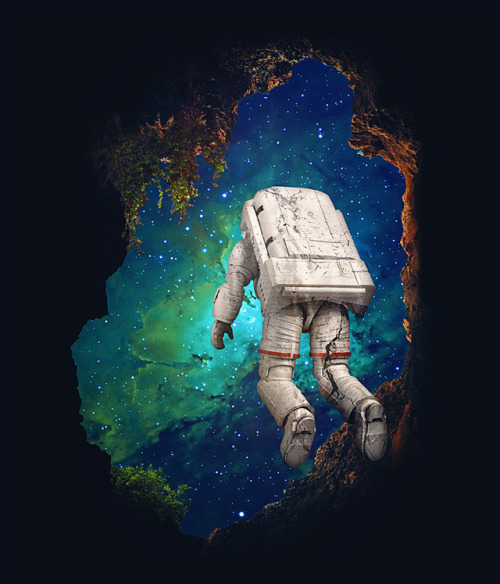
Departure








June 5, 1966 – Beautiful views of planet Earth captured from the orbiting Gemini 9 space capsule. (NASA/ASU)
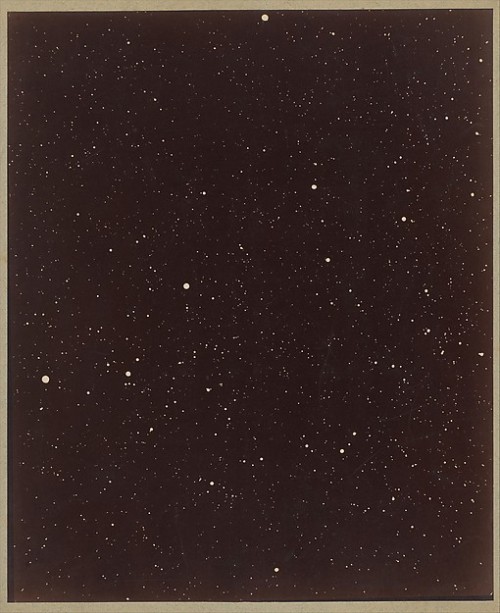

Stars reflect off a telescope in the Canary Islands as it pivots


Rosette Nebula & Pelican Nebula by Jesper Sundh
Date the boy of the infinite. He who swirls and twists outside of time. Outside of space. He who would stop the ticking of the clock for you, to spend an eternity with you. He who would turn back the dial, to have another moment before you are gone. Always there, but always not.
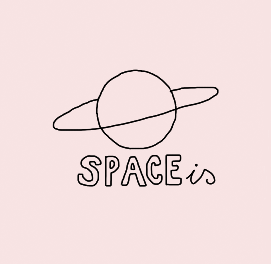
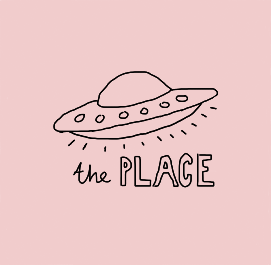


Why is there something here, instead of nothing? And why are we aware of this question—we people, particles going around and around this black stone? Why are we aware of it?
Annie Dillard, from For the Time Being (Alfred A. Knopf, 1999)
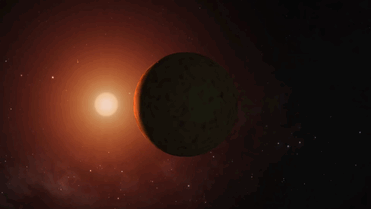
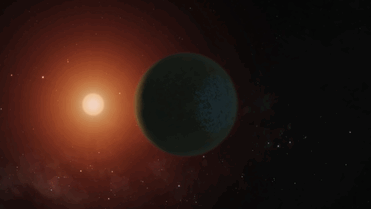
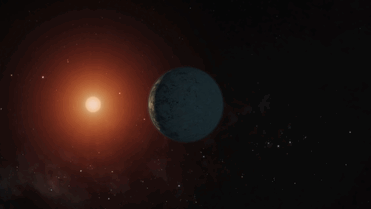
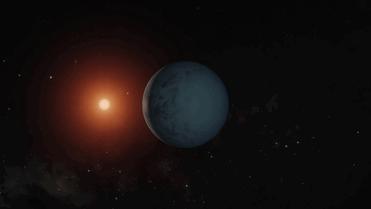


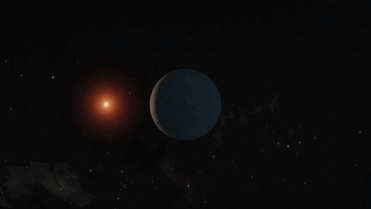
TRAPPIST-1 Planets - Flyaround Animation
Credit: NASA/Spitzer
Deep Thought of the Day
Over 90% of our solar system actually begins where the planets end. Deep stuff. Yes, the galaxy is interesting, but our own cosmic backyard should pique our interest as well. Lots of interesting things just a hop, skim, and few year journey in a yet-to-be-designed spacecraft.

Nebula Images: http://nebulaimages.com/ Astronomy articles: http://astronomyisawesome.com/

A Blue Bridge of Stars between Cluster Galaxies designated SDSS J1531+3414
js










May 11, 2009 — The Space Shuttle Atlantis blasts off from Cape Canaveral, Florida, heading to orbit for an 11-day mission to the Hubble Space Telescope.
(NASA)
![You’ve Grown So Much! [Via @badsciencejokes]](https://64.media.tumblr.com/430d42ef901a92fbce8c14c9090b024f/tumblr_ophsve20Op1s04h2ho1_500.jpg)
You’ve grown so much! [Via @badsciencejokes]
In relation to the Earth, I’m not that far away from where I was born. But in relation to the Universe, I’m millions if not billions of miles away from where I was actually born, and I’ll likely never return there.
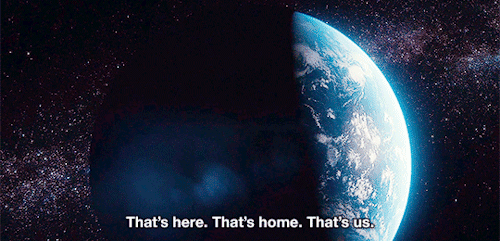
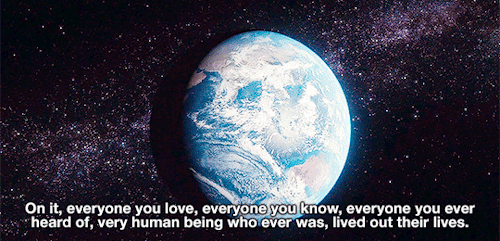
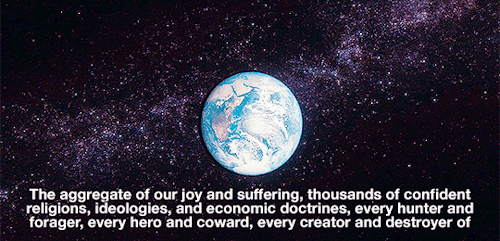

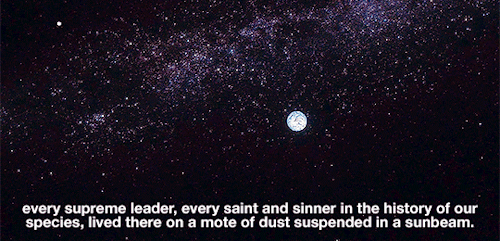
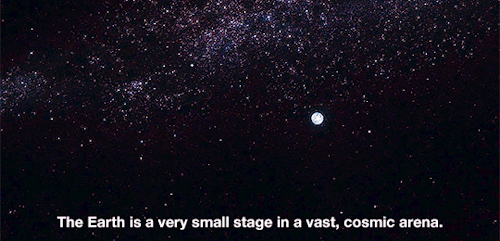
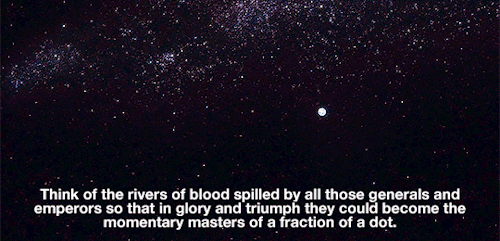
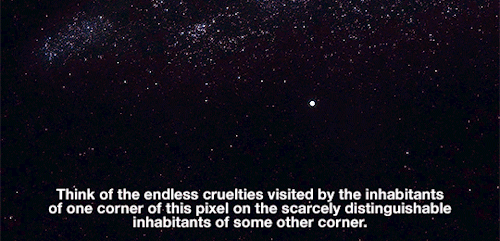
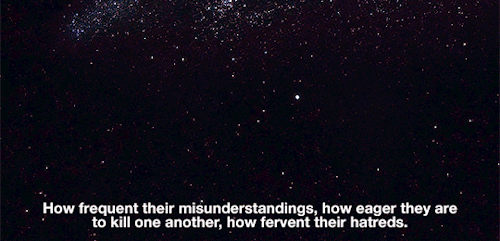
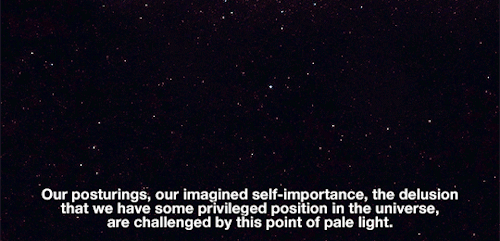
- Carl Sagan, Cosmos: A Spacetime Odyssey










April 16, 1972 – Our lovely Earth, photographed from the Apollo 16 spacecraft as it journeyed toward the Moon. (NASA)
NASA scientists are closer than ever to finding life outside of Earth.
follow @the-future-now
*sees moon* *remembers outer space* nice
Solar System: Things to Know This Week
Like sailors of old, the Cassini mission team fondly thinks of the spacecraft as “she." On April 22, she begins her Grand Finale, a spectacular end game—22 daring dives between the planet’s atmosphere and innermost rings. Here are 10 things to know about her Grand Finale.

1. She’s Broadcasting Live This Week
On Tuesday, April 4 at 3 p.m. EDT (noon PDT), At Jet Propulsion Laboratory, the Cassini team host a news briefing to discuss the mission’s Grand Finale.
Tune in Tuesday: youtube.com/nasajpl/live

2. She’s Powered in Part By … Titan
Cassini left Earth with less than 1/30th of the propellant needed to power all her adventures at Saturn. The navigation team used the gravity of Saturn’s giant moon Titan to change course and extend the spacecraft’s exploration of Saturn. Titan also provides the gravity assist to push Cassini into its final orbits.
More on Cassini’s navigation: saturn.jpl.nasa.gov/mission/spacecraft/navigation/

3. She’s a Robot
Cassini is an orbiter that was named for 18th century astronomer Giovanni Domenico Cassini. She was designed to be captured by Saturn’s gravity and then explore it in detail with a suite of 12 powerful science instruments.
More on the Spacecraft: saturn.jpl.nasa.gov/mission/spacecraft/cassini-orbiter/

4. She Brought a Friend to Saturn
Cassini carried the European Space Agency’s Huygens Probe, which in 2005 descended through Titan’s thick, perpetual clouds and made the most distant landing to date in our solar system.
More on Huygens: saturn.jpl.nasa.gov/mission/spacecraft/huygens-probe/

5. She’s a Great Photographer
Your mobile phone likely captures dozens of megapixels in images. Cassini, using 1990s technology closer to one megapixel cameras, has returned some of the most stunning images in the history of solar system exploration.
Cassini Hall of Fame Images: go.nasa.gov/2oec6H2 More on Cassini’s Cameras: saturn.jpl.nasa.gov/imaging-science-subsystem/

6. She’s an Inspiration
Those great images have inspired artist’s and amateur image processors to create truly fantastic imagery inspired by the beauty of Saturn. Feeling inspired? There’s still time to share your Cassini-inspired art with us.
Cassini Inspires Campaign: saturn.jpl.nasa.gov/mission/cassiniinspires/

7. She’s Got a Long History
Two decades is a long time to live in the harsh environment of outer space (respect to the fast-approaching 40-year-old twin Voyager spacecraft). Launched in 1997, Cassini logged a lot of milestones over the years.
Explore the Cassini Timeline: saturn.jpl.nasa.gov/the-journey/timeline/

8. She Keeps a Diary
And, you can read it. Week after week going back to 1997, Cassini’s adventures, discoveries and status have been chronicled in the mission’s weekly significant events report.
Read It: https://saturn.jpl.nasa.gov/news/?topic=121

9. She’s Got a Fancy New App
Cassini was the prototype for NASA’s Eyes on the Solar System 3-D visualization software, so it’s fitting the latest Cassini module in the free, downloadable software is the most detailed, elaborate visualization of any mission to date.
Fly the Mission - Start to Finish: http://eyes.nasa.gov/cassini

10. She’s Going Out in a Blaze of Glory
In addition to all the new information from 22 orbits in unexplored space, Cassini’s engineers reprogrammed the spacecraft to send back details about Saturn’s atmosphere to the very last second before the giant planet swallows her up on Sept. 15, 2017.
More on the Grand Finale: saturn.jpl.nasa.gov/grandfinale
Discover more lists of 10 things to know about our solar system HERE.
Make sure to follow us on Tumblr for your regular dose of space: http://nasa.tumblr.com
*shows up at nasa with sleeping bag & pillow* I’m ready to go to the moon

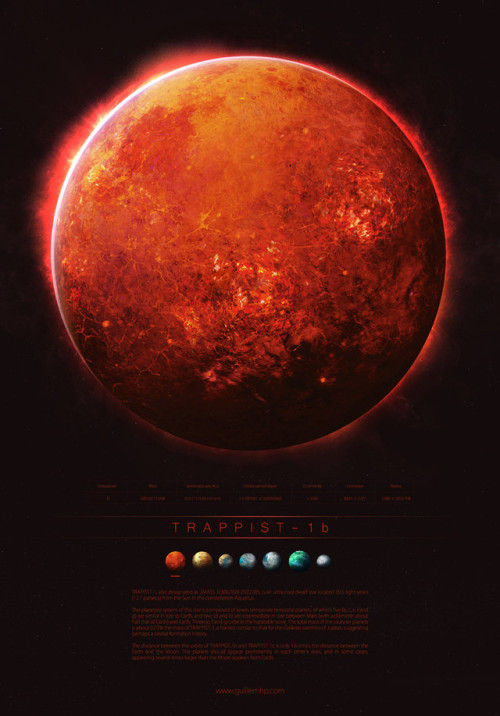
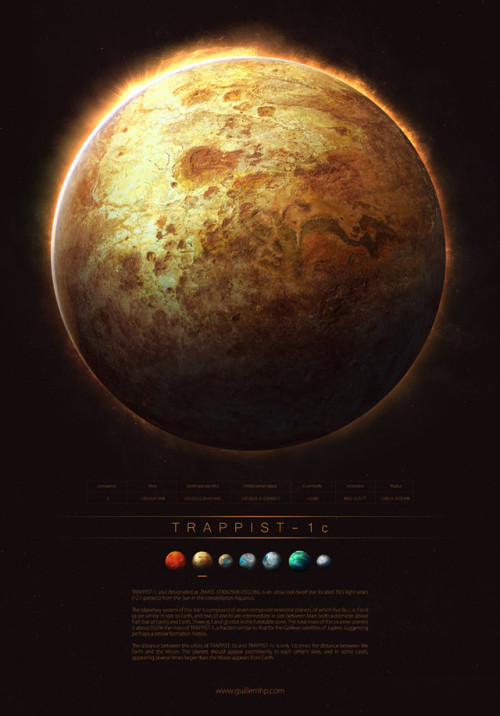
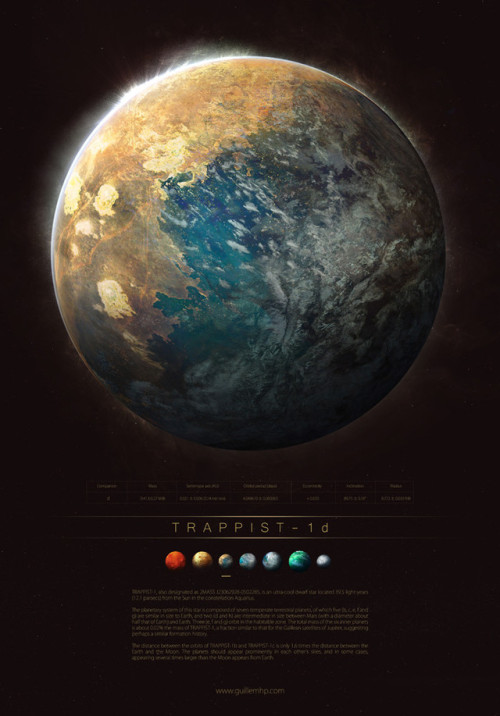
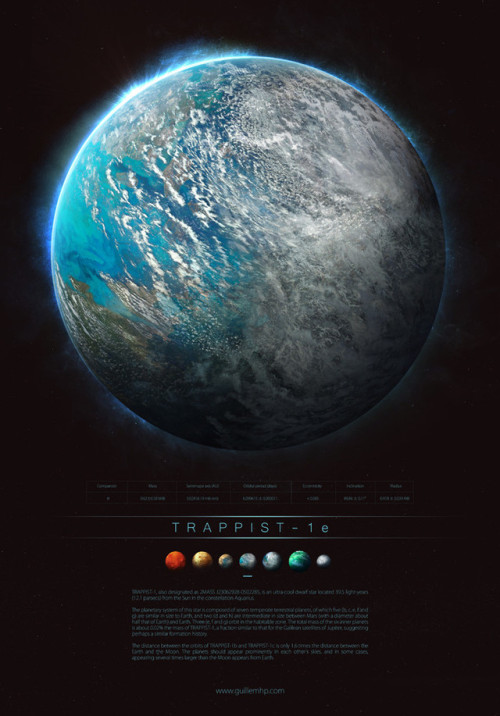
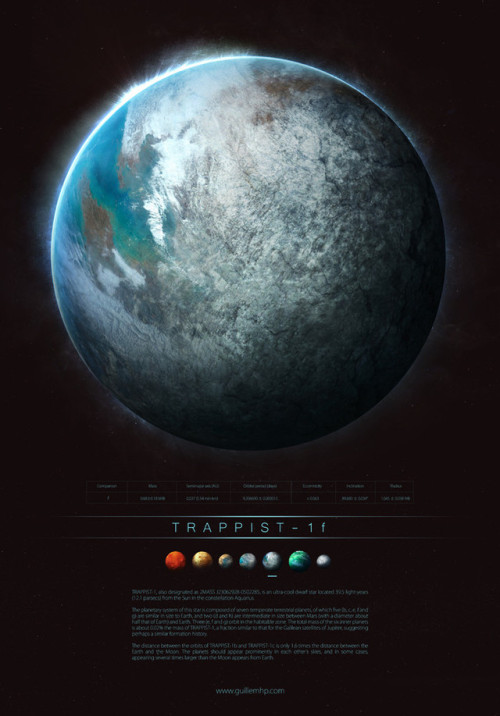

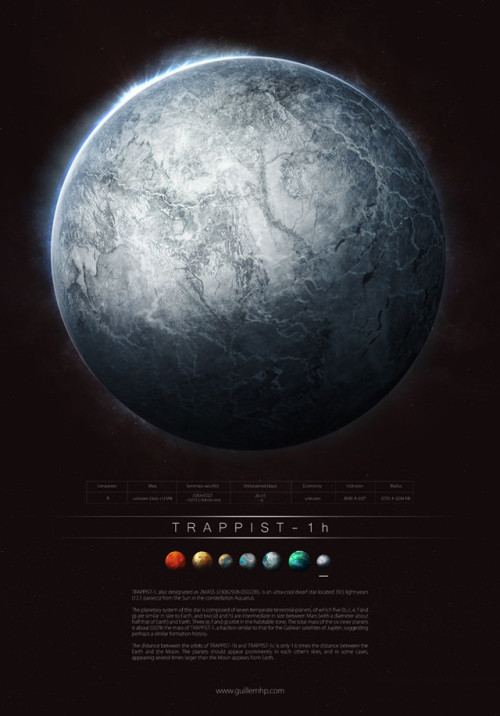
TRAPPIST - 1 by Guillem H. Pongiluppi
If Earth were a Moon of Jupiter


Artist’s impression of stars born in winds from supermassive black holes
Read more at: Explorando o Universo
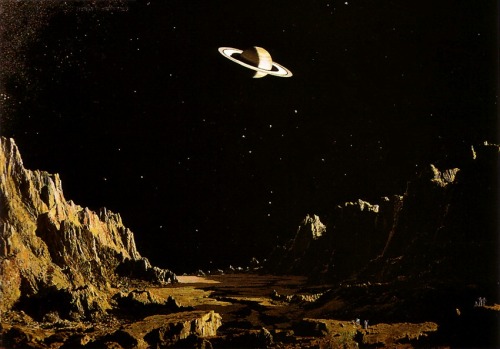
Saturn, as seen from Iapetus, painted by Chesley Bonestell.